Note: This article pertaining to Yama Memorial in Minsk: A Solemn Visit was originally published on Thursday, July 27, 2017 at 11:02 in the morning and has been updated.
Wandering on the southwest corner of Zaslavskaya and Melnikajte streets in the city of Minsk, one might not initially notice that what appears to be a small park lined with trees and grass is actually a reminder of the horrors which had occurred on that very spot greater than 83 years ago.
Yama Memorial in Minsk: A Solemn Visit
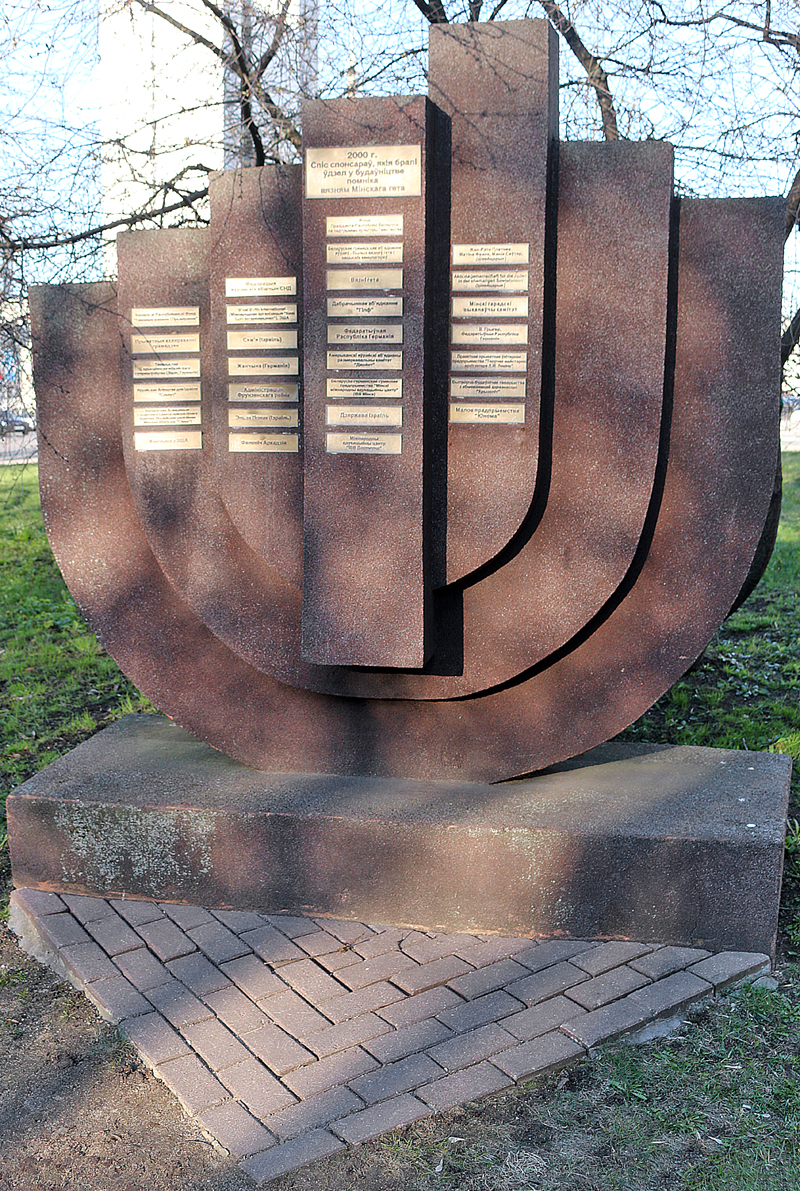
Welcoming visitors at the top of the staircase is a menorah constructed of red stone, with metal plaques engraved in words and names in Russian.

A bronze sculpture called The Last Way was built along the staircase and added to the complex in the year 2000.
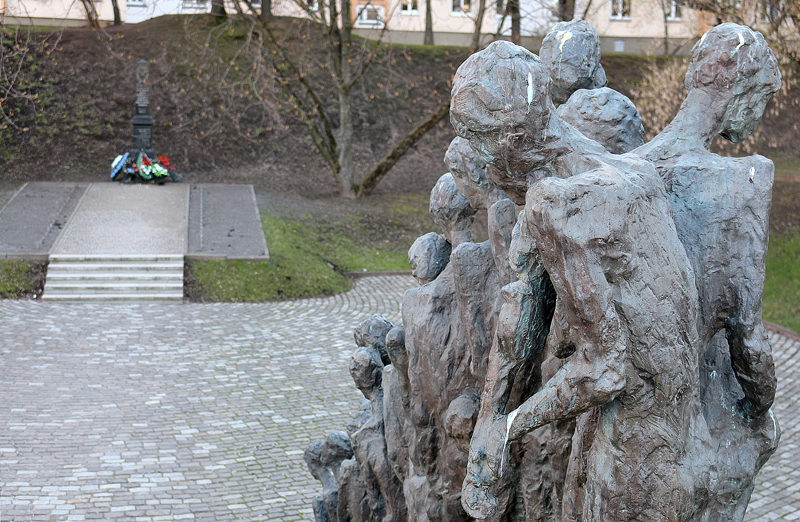
The sculpture — depicting 27 of the approximately 5,000 ghetto inmates who were forced to descend into what is known in English as The Pit before being shot to death — faces down into The Pit towards an obelisk which was erected in 1947 in their memory.

The obelisk was the first monument within the former Soviet Union which paid tribute to the victims of the genocide with a Yiddish inscription.

Colorful floral wreaths lay at the base of the obelisk in stark contrast to the dreary grey environment surrounding it.

Chaim Maltinski was a poet who wrote the inscription in Yiddish using Hebrew letters: “In bright remembrance for all eternity of the 5,000 Jews who perished at the hands of the cruel enemies of humanity — the Nazi criminals, March 2, 1942”…
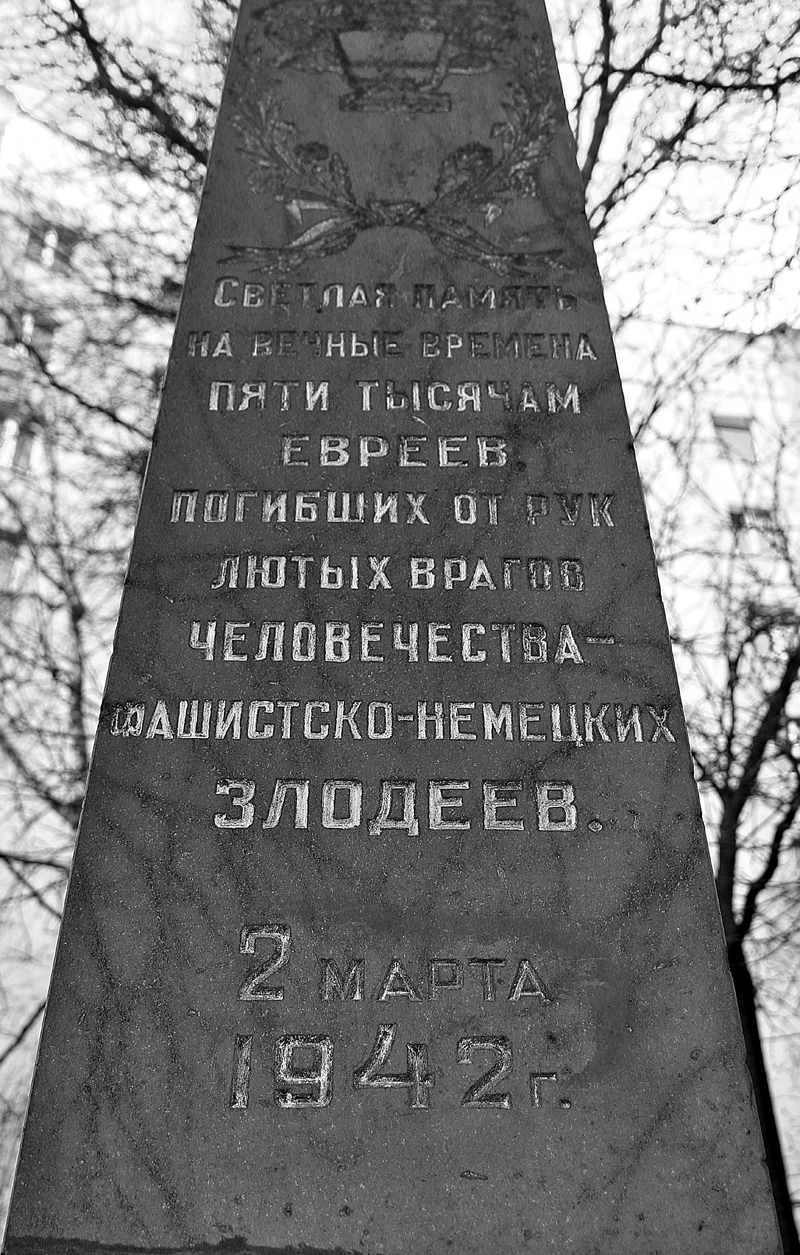
…with a translation in Russian in Cyrillic letters in homage to the people who were shot to death on that day at that site.
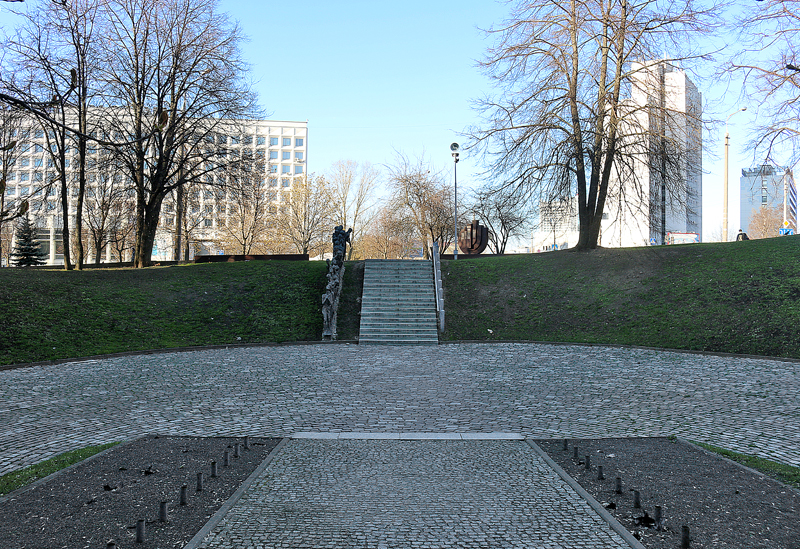
This view from the obelisk faces northeast towards the stairs adjacent to the bronze sculpture and the southwest corner of Zaslavskaya and Melnikajte streets, which is located in what was once known as the Minsk ghetto, where up to 80,000 Jewish people were forced to live between 1941 and 1943.

Almost all of them were murdered…

…which included children — approximately 200 of whom were orphans — as depicted as part of the sculpture.

Only 13 prisoners of the ghetto survived by hiding in a crypt near the old Jewish cemetery before Minsk was finally liberated from its occupants.
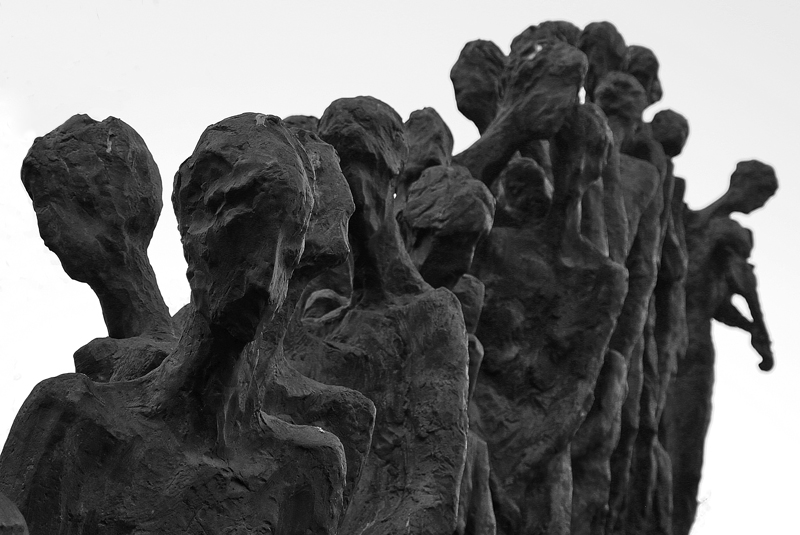
The sculpture — which represents a group of doomed martyrs walking down the steps of the pit — and reconstruction of the memorial took eight years to complete because the work was all done by hand and not by machinery; and was created by architect Leonid Levin and sculptors Elsa Pollak and Alexander Finski.
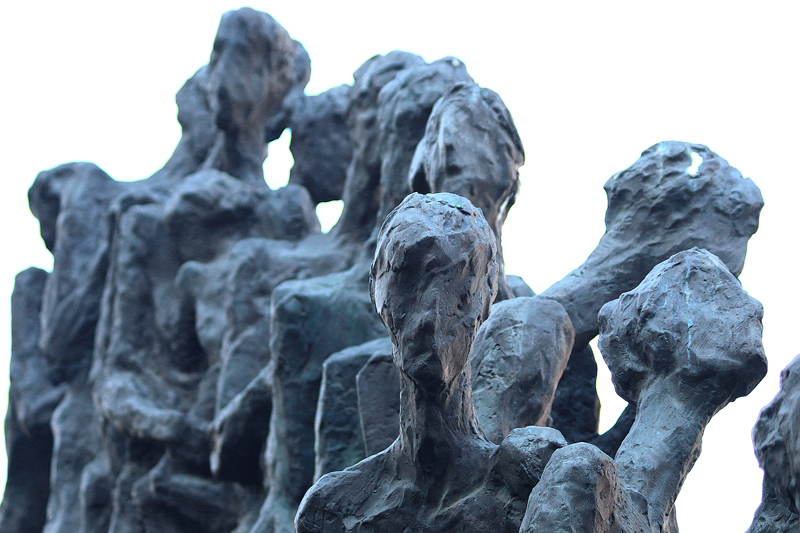
Authorities during the era when Belarus was under Soviet rule regularly threatened to remove the monument or to fill in the entire pit.

Only after the country of Belarus had gained independence on Sunday, December 8, 1991 were commemorative ceremonies allowed to be held at this site.
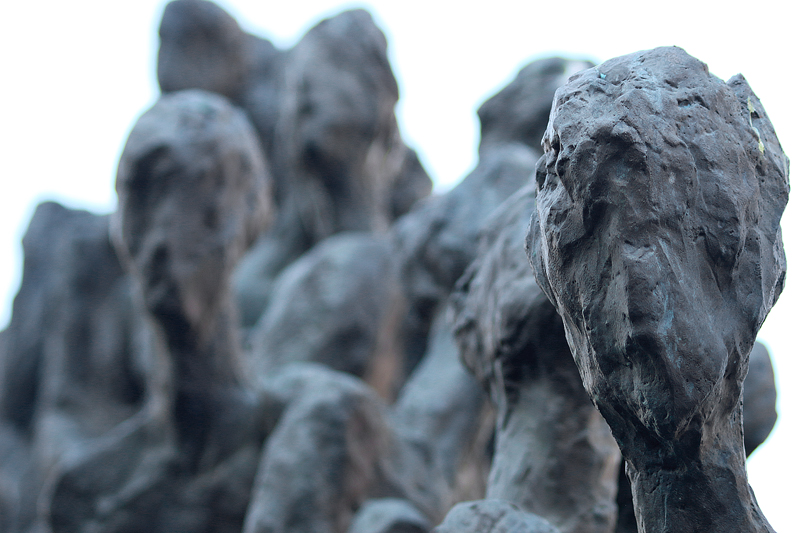
Although the original intent was to have each figure depict a specific detailed type of human being — such as a pregnant woman, for example — the final decision was to leave each figure intentionally vague and devoid of national colors…

…and for me, it worked, as I found the sculpture simultaneously intriguing and haunting — especially as I was the only visitor; and it was eerily quiet at times.

I could almost see the despair and resignation in some of their “faces.”

The late afternoon sun and the clear sky sometimes gave a somewhat bluish tinge to the sculpture.

The path down the 18 steps — the number 18 is synonymous with the Hebrew word chai חַי, which means life or living — of the granite block staircase and onto the cobblestone floor of The Pit is roughly the same as that which the 5,000 Jewish people took just before they were killed.
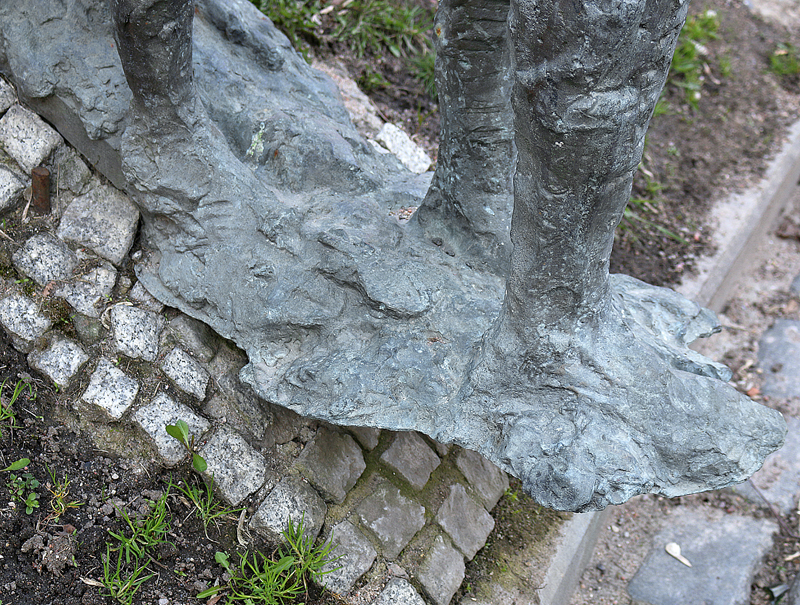
I found it interesting how the bottom part of the bronze sculpture does not descend all the way to the ground.

Visitors will not find any plaques in the English language at this monument.
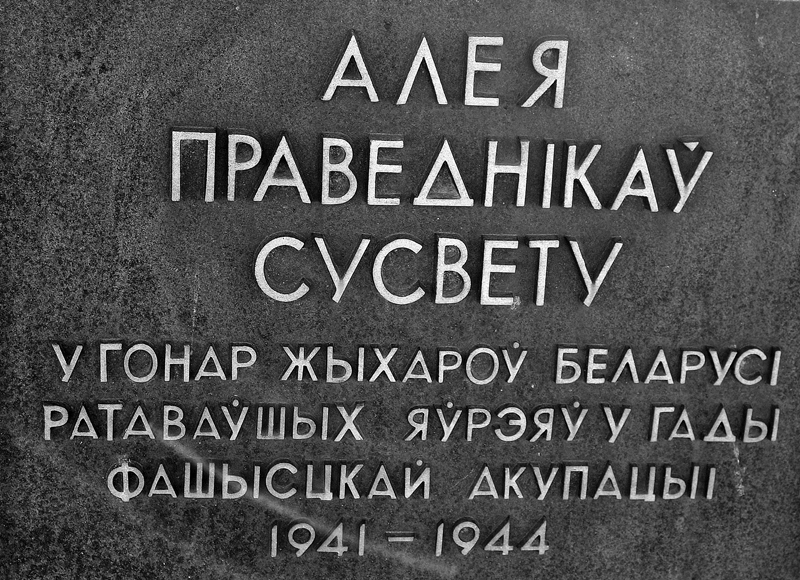
Final Boarding Call
The bronze sculpture reminded me of another somber memorial in Budapest of shoes on the bank of the Danube River, where Jewish people were ordered to take off their shoes at the edge of the river — only to be shot with an arrow by a marksman so that their bodies would easily fall into the river and be carried away by the current.
Yama Memorial
11 Melnikajte Street
Alleya Pravednikov Mira, Central District
Minsk, Minskaja voblasć
Belarus
Yama Memorial is open to the public 24 hours per day, seven days per week; and no employees or facilities are at the site — nor is there any admission fee.
I walked around Minsk and did not take public transportation; but if you were to walk from the main train station, the memorial is located almost three kilometers north of the train station and will take you approximately 35 minutes to walk, which is certainly recommended on a beautiful day…
…but if the weather is cold and inclement — as a snowy winter day, for example — keep in mind that there are no indoor facilities at this memorial.
The memorial is also located three blocks southwest of the Svislach River, which has wooded park land on much of each side of the river banks — and it is not far from central Minsk.
You can spend as few as five minutes at Yama Memorial if you are truly in a hurry; but you can also spend as much time as you like there — and I would definitely recommend visiting this memorial if you find yourself in Minsk.
All photographs ©2017 by Brian Cohen.

